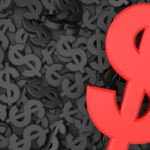How Much Cash Can You Deposit at a Bank Without Raising Red Flags?
You’re not the only person who has ever pondered how much money you can deposit at a bank without drawing undue attention. In today’s financial environment, knowing bank deposit limitations is essential, regardless of whether you manage a sizable sum of money, operate a small business, or work as a freelancer.
Knowing where the lines are drawn and what to anticipate when crossing them is crucial given the anti-money laundering regulations and IRS reporting criteria.
This 2025 guide explains how much money you can deposit lawfully, what happens if you deposit more than that, and how to do it without drawing suspicion.
Click to learn more
How Much Cash Can You Deposit at a Bank Without Raising Red Flags
The majority of financial institutions don’t have any restrictions on the amount of money you can deposit. But if you deposit more than $10,000, the bank and federal authorities will take further action. These safeguards are in place to assist keep an eye on illegal conduct and guarantee adherence to national banking legislation.
If you intend to deposit a substantial sum of money, it’s also critical to take into account the bank’s insurance coverage. Only up to $250,000 per depositor and per insured bank is covered by the Federal Deposit Insurance Corporation (FDIC). In the event of a bank failure, holding sums above this limit—even across several accounts at the same institution—could leave some of your money exposed.
Actual Cash Deposit Situations at ATMs and Banks
Large cash deposits are typically accepted by banks, however automated teller machines may have physical limitations. Usually limited to a specific quantity of notes every transaction, ATMs frequently have a bill-acceptance restriction. Even with large denominations, your total deposit per session may be restricted because an ATM can only process 40 separate bills at once. In some situations, depositing the entire amount may require completing several transactions.
The Reasons Behind Monitoring Deposits Over $10,000
Any U.S. bank that accepts a cash deposit of more than $10,000 must notify the federal government of the transaction. This is required by federal law and entails filing a Currency Transaction Report (CTR), irrespective of the source or purpose of the deposit.
The government keeps an eye on significant cash flows under the Bank Secrecy Act and the USA PATRIOT Act in order to stop illicit financial operations like fraud, money laundering, and financing of terrorism. Whether the money is deposited in one transaction or throughout several transactions made on the same day, the reporting obligation is still in effect.
The Best Methods for Making Large Cash Deposits
The safest way to handle big amounts of physical currency is to go straight to a bank branch. In-person transactions guarantee security, accuracy, and the availability of bank employees to discreetly count and verify the cash.
Alex King, a financial expert and former bank executive, suggests that in order to prevent unwanted attention, cash should be carried in a safe, opaque container, like a heavy-duty purse or briefcase. Additionally, he advises bringing legitimate identification and any supporting documentation, such as invoices, receipts, or contracts, that attest to the monies’ origin.
Using an armored transport service could be a good option for people or companies moving very significant sums of money, usually $50,000 or more. Although these services are usually linked to commercial use, individuals can also access them. You can contract for armored carriers on your own or through your bank. A charge structure based on a fixed rate or a percentage of the amount delivered is typically included with the service. Some suppliers provide subscription-based plans for regular deposits.
How the Government Monitors Significant Deposits
Financial institutions must submit a CTR to the Financial Crimes Enforcement Network (FinCEN) if a cash deposit exceeds $10,000. These reports cover more than just deposits; they also cover significant cash withdrawals, currency exchanges, and specific kinds of payments or transfers involving actual currency.
Banks are required to obtain identifying information from the individual making the transaction in order to complete these reports. A Social Security number, a government-issued ID, or other official documents may be examples of this. Whether or whether the person is a bank customer, the obligation remains the same.
Recognizing the Dangers of Structure
By splitting a sizable deposit into multiple smaller ones spaced out over time or across various locations, some people try to avoid setting off reporting criteria. Even when the funds are obtained legally, this method, called structuring, is prohibited.
There may be serious repercussions from structure. Criminal charges, fines of up to $250,000, and up to five years in jail are all possible outcomes for offenders. If the total structured amount surpasses $100,000 in a single year or if other laws are broken in addition to structuring, these fines grow significantly. Banks may, even in the absence of formal charges, shut or limit access to accounts suspected of being used for this purpose in addition to facing legal ramifications.
Alex King stresses how crucial it is to have thorough financial records and paperwork. You can avoid misconceptions or account freezing by providing unambiguous evidence of the source of your funds.
IRS Form 8300’s Function
Companies are legally required to use IRS Form 8300 to report cash transfers over $10,000, whether they occur in a single transaction or through related payments. Along with conventional cash, this also covers other financial instruments including bank drafts, cashier’s checks, money orders, and traveler’s checks with face values up to $10,000.
By making sure that all significant cash payments are tracked down, regardless of how they are made, this approach aims to preserve transparency and stop financial system abuse.
Although banks usually don’t have strict restrictions on how much money you can deposit, it’s important to know what rules apply when your deposit exceeds $10,000. A thorough comprehension of the reporting regulations, a dedication to openness, and the appropriate safety measures are necessary for making significant deposits.
Avoiding measures like organizing and maintaining detailed records are essential, regardless of whether you’re a firm managing cash revenue on a regular basis or an individual handling a one-time windfall. You can further improve your security and compliance by using armored services or bank offices for important transactions.
You can make sure that your sizable cash deposits are handled sensibly, safely, and completely compliant with federal law by adhering to these rules and being proactive with paperwork.
In conclusion
While making a cash deposit at a bank is not against the law, doing it incorrectly may result in inquiries, hold-ups, or worse. You can handle sizable cash deposits with comfort and assurance if you are aware of the $10,000 IRS reporting level and adhere to your bank’s regulations.
Transparency and appropriate documentation should always come first, regardless of whether it comes from a large sale, a gift, or your company’s profits. To make sure your money travels securely and smoothly, ask your bank for advice whenever in doubt.










